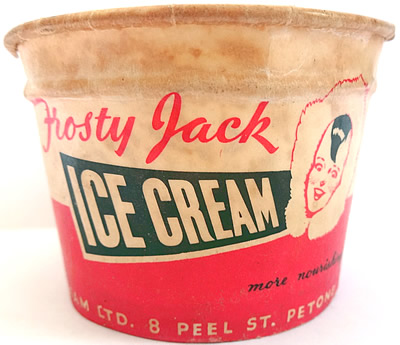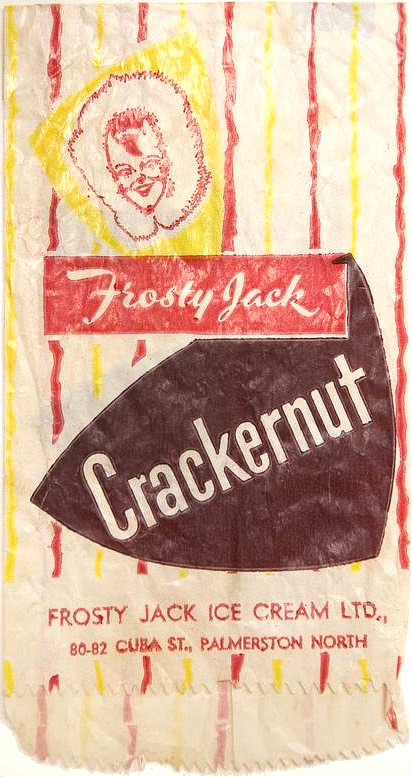A new factory was officially opened on the Vivian St site on 30 September
1925.

Evening Post advertisement, 30 September, 1925.
By October 1925, free delivery was being offered within the city area,
and Mousse was included in the company's product range.
Eskimo Pies sold for 3d, and in 1927, the company
claimed they sold 420,000 of them that year, as well as 60,00
gallons of Frosty Jack Ice Cream. Frosty Jack ice cream was
made of "Cream, Milk, Sugar, Flavour, and less than 1/2
per cent, of Gelatine". Cream and milk came from the Municipal
Milk Department.

Auckland Star report, 16 February, 1926.

Eskimo Pie advertisement, Evening Post, 16 March 1927
In November 1929, a new factory was opened at 25-29 Tennyson St, Te
Aro.

Ice cream factory exterior: Frosty Jack - Frozen Products
Limited, showing the cool store and an ice cream van parked
nearby, ca. 1930.
- Museum of New Zealand Te Papa
Tongarewa, C.003077.
On the opening of the new factory (above) the Evening Post reported:
A MODEL FACTORY.
FROZEN PRODUCTS LTD.
ICE-CREAM IN THE MAKING.
It sounds almost incredible, but nevertheless it is a fact that last
year New Zealanders consumed no less than 195,000lb of butter-fat, not
in drinking milk, but in eating ice-creams. Of course, during the summer
months the request, "I want an ice-cream, please," is made over the counters
thousands of times daily, and a very healthful article of diet is an
ice-cream if it is properly made. Pound for pound, it contains much more
nourishment than meat, and it has the great advantage in the fact that
amongst its ingredients are none that are indigestible.
The ice-creams and other delicacies made by Frozen Products,
Ltd., are very well known to the public, but consumers would
be vastly more interested in them did they know all that
goes on in the new factory in Tennyson Street. Here has been
installed the very latest machinery, and it is quite a revelation
to see the latest scientific methods used in the manufacture
of ice-creams and similar products.
The ingredients are few - cream, milk, sugar, and various flavourings
- and it is a sine qua non with Frozen Products, Ltd., that these ingredients
shall be of the highest quality it is possible to obtain. All the containers
and machinery are kept scrupulously clean, so that the finished article
is pure and wholesome. Great 500-gallon mixing tanks discharge their
contents through homogenising machines which ensure that all particles
are thoroughly broken up, and from these the mixture goes into the freezers.
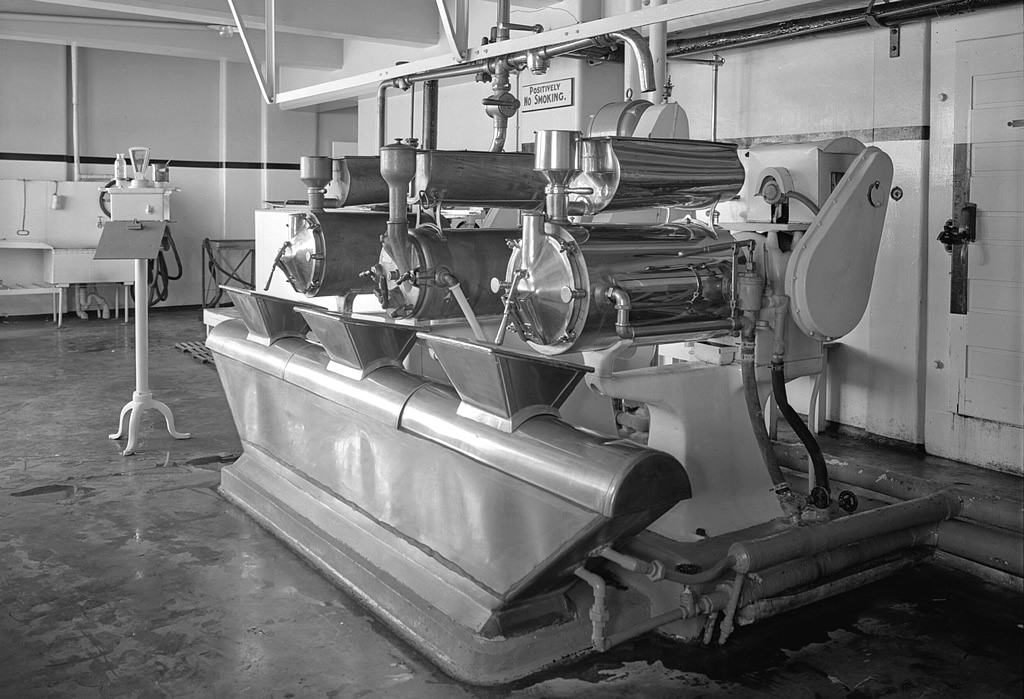
Frosty Jack Frozen Products Limited, ice cream churns (3), ca.
1930. Photographer KE Niven.
- Museum of New Zealand Te Papa Tongarewa, C.003078.
As required, it is drawn off for its final appearance as ice-cream,
Eskimo Pie, or some other luscious dainty. One of the most interesting
bits at machinery in this up-to-date factory is that which, with
almost supernatural uncanniness, takes blocks of the frozen mixture,
dips them into liquid chocolate, and neatly wraps them, to be subsequently
consumed as Eskimo Pie.
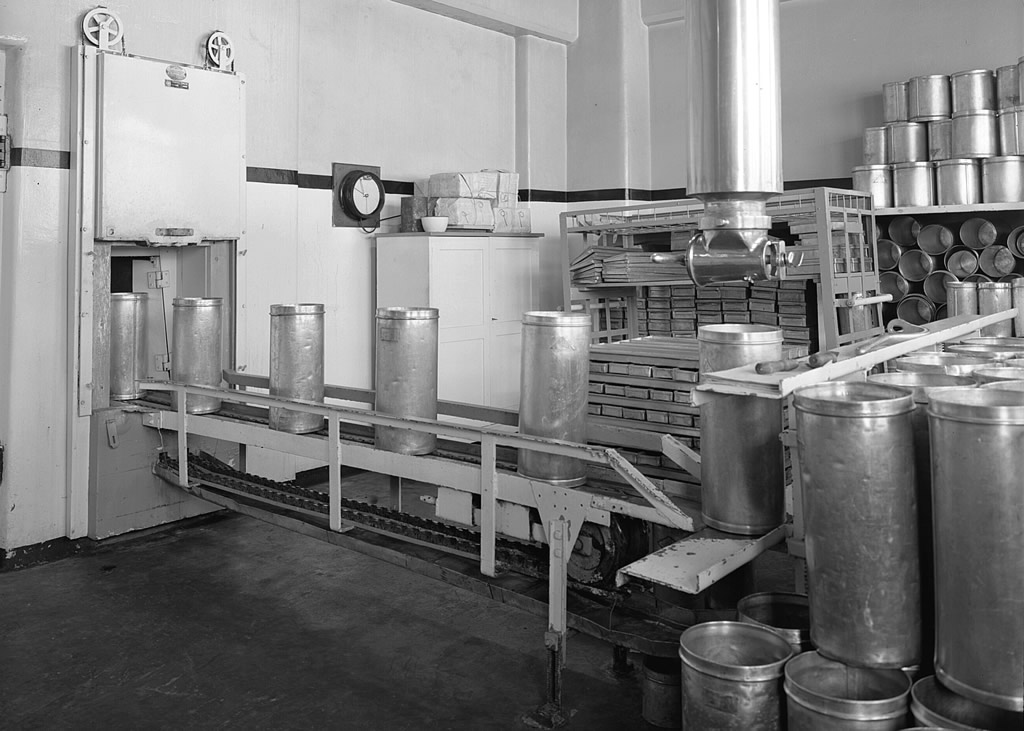
Frosty Jack Frozen Products Limited, ice cream cans on conveyor
into hardening feezer, ca. 1930. Photographer KE Niven.
- Museum of New Zealand Te Papa Tongarewa, C.003075.
The whole factory abounds with labour-saving machinery, obviating
handling of the products.
Naturally, ice has to be manufactured in large quantities, seeing that
12 to 13 tons a day are used on the premises, in addition to the vast
quantity which is sent out for use in housewives' coolers.
A 32-ton ice tank does this job most efficiently, and the store chambers
for its output is a pleasant place to be in on a hot summer day. Four
cool-stores can house and keep in good condition 50 to 60 thousand cases
of fruit, for fresh fruit is essential for the pure flavourings used.
Then there are rooms where cabinets are manufactured for use in the home,
Frozen Products, Ltd supplying ice daily, cut into convenient blocks
for use in them.
Last, but not least, this most interesting factory contains the testing
laboratories, which ensure that all ingredients and products reach the
very highest possible standard of purity.
Frozen Products, Ltd., are to be congratulated upon their enterprise
in the erection and equipment of a factory which is probably second to
none.
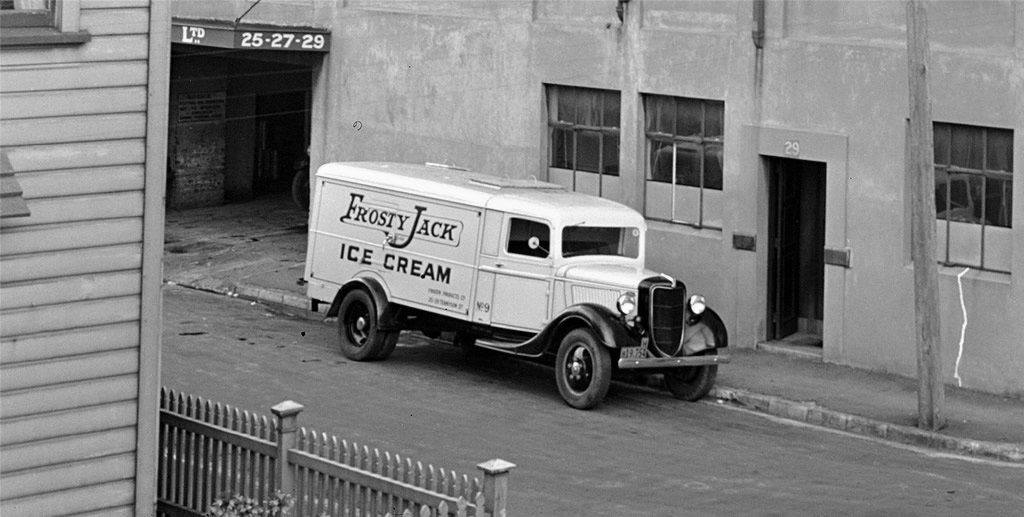
Frosty Jack Ice Cream van outside the new Tennyson St factory,
ca. 1930.
Museum of New Zealand Te Papa Tongarewa, C.003077 (detail).
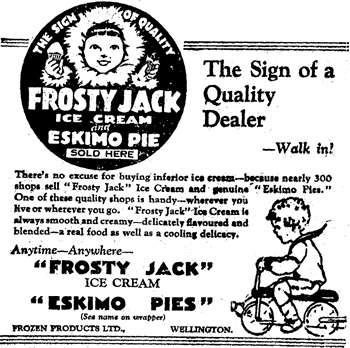
Frosty Jack and Eskimo Pie advertisement, Evening Post, 19 February
1931.

The Popular Milk Bar, 11 Courtenay Place, Wellington,
showing Frosty Jack and Eskimo Pie signage,
1930s.
- Dominion Post.
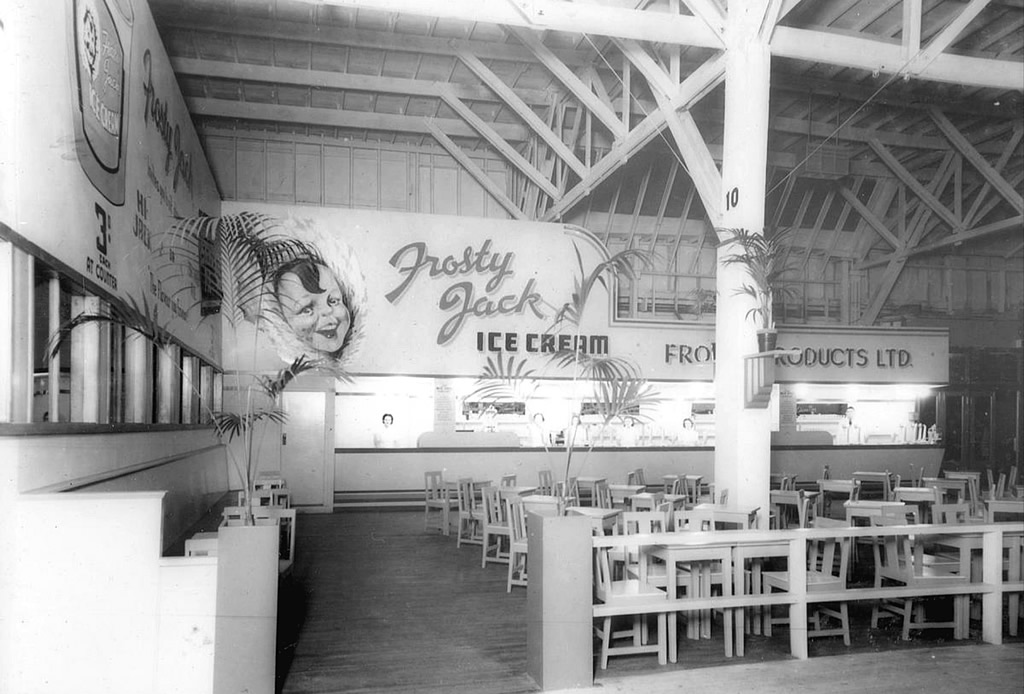
Frozen Products Limited - Frosty Jack Ice Cream
display, Industrial Court, New Zealand Centennial Exhibition,
1940.
- The
Fletcher Trust Archives.
During the 1940s, free Eskimo Pie's or Frosty Jack Rainbow Bars were
offered to children during Saturday afternoon matinees at the New Time
Theatre (cinema) in Cuba St., Wellington.
Wartime sugar restrictions (a 50% cut in supplies!) made life difficult
for ice cream manufacturers, but Frosty Jack made a virtue of necessity:
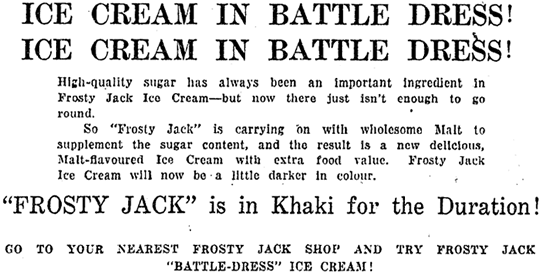
Frosty Jack advertisement, Evening Post, 2 November 1942.
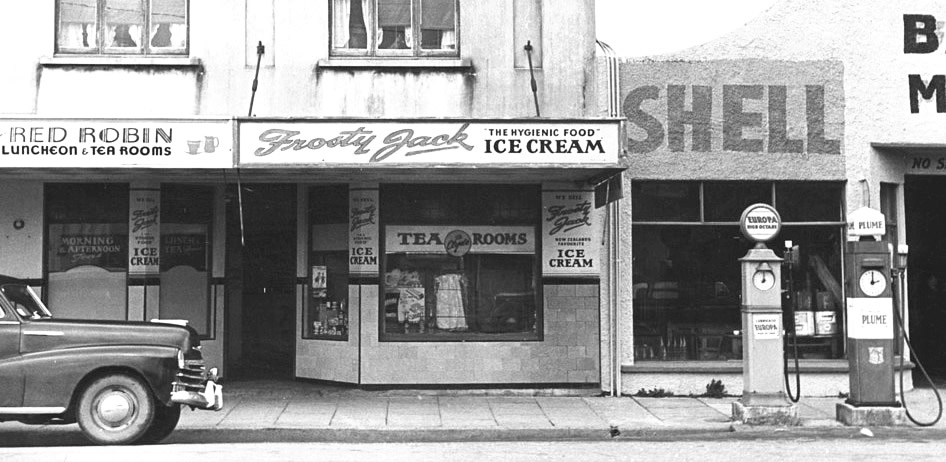
Frosty Jack-branded tea rooms, Upper Hutt, 1949.
- Upper Hutt City Library Heritage Collections P3-398-1573.
The Wellington plant later moved to 8 Peel St., Petone,
and a second Frosty Jack factory was opened in Palmerston North.
|
